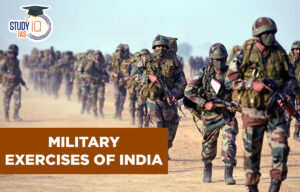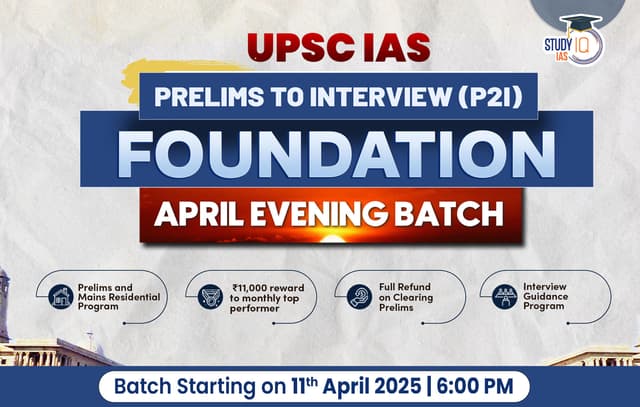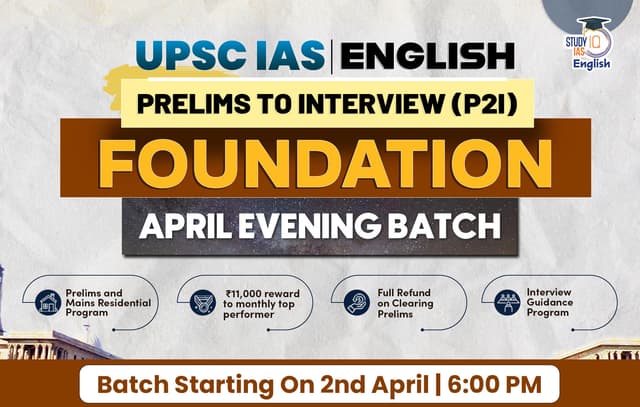Daily Current Affairs for UPSC 2023
Q) Recently seen in news, the ‘Green Reward Programme’ is launched by which one of the following organization?
- Global Environment facility
- World Economic Forum
- Nottingham Trent University
- United Nations Environment Programme
Daily Current Affairs for UPSC – 23 June April 2023
Explanation:
- Option (3) is correct: The Nottingham Trent University (NTU) Green Reward Programme is an innovative and comprehensive initiative designed to promote sustainable behaviours and practices among students and staff. NTU launched the Green Reward Programme in 2015. The main objectives of this programme are as follows:
- Encourage sustainable behaviours among students and staff.
- Raise awareness about environmental issues and sustainability.
- Foster a culture of sustainability throughout the university.
NTU partnered with a specialized provider to develop an online platform where participants could track and earn rewards for sustainable actions. The platform included features such as tracking energy and water consumption, recycling rates, sustainable commuting, and engagement with sustainability-related events and activities. Participants earned points for each sustainable action, which could be redeemed for a range of rewards, including discounts on campus facilities, sustainable products, and local services. This programme incentivized individuals to actively participate and engage with the program. NTU conducted extensive communication campaigns to raise awareness about the program. They utilized various channels, including social media, email newsletters, and on-campus events, to educate participants about the program’s benefits and encourage their involvement.
Q) Consider the following statements about Textiles industry in India:
- India is the third-largest exporter of textiles and apparel in the world.
- Man-made fibres are subject to an 18 percent goods and services tax.
- The textile and apparel industries recently registered a more than 10 percent increase in exports.
How many of the statements given above is/are correct?
- Only one
- Only two
- All three
- None
Explanation:
- Statement 1 is correct: The textiles and clothing sector contributes about 14% to the industrial production and 3% to the gross domestic product of the country. About 27% of the foreign exchange earnings are on account of export of textiles and clothing alone. Around 8% of the total excise revenue collection is contributed by the textile industry. It accounts for as large as 21% of the total employment generated in the economy. Around 35 million people are directly employed in the textile manufacturing activities. Indirect employment including the manpower engaged in agricultural based raw-material production like cotton and related trade and handling could be stated to be around another 60 million. India is the largest producer of cotton & jute in the world, the second largest producer of silk in the world the 6th largest producer of Technical Textiles. India stands as the 3rd largest exporter of Textiles & Apparel in the world.
- Statement 2 is correct: Goods and Services Tax (GST) has created distortions in the Textile and Apparel sector in India, impeding its competitiveness. For instance, man-made fibres (MMF) are taxed at 18 per cent for fibre, 12 per cent for yarn and 5 per cent for fabric. This inverted tax structure makes MMF textiles costly.
- Statement 3 is incorrect: Textiles and apparel exports registered a 12.2% decline in May as the industry continued to face low demand in its key overseas markets including the U.S. The main reason behind the declining exports is the sluggish demand in major importing countries including the U.S., Germany, and the U.K. on account of inflation and also piled up inventory, experts observed.
Q) With reference to Enforcement Directorate (ED), consider the following statements:
- It functions under the overall control of Ministry of Home Affairs.
- The ED can summon any person whose attendance is considered necessary for giving evidence.
- Under the Prevention of Money Laundering Act, ED can attach a property of criminal proceeds.
How many of the statements given above is/are correct?
- Only one
- Only two
- All three
- None
Explanation:
- Statement 1 is incorrect: The Enforcement Directorate (ED) is a specialized law enforcement agency in India. It functions under the Department of Revenue, Ministry of Finance, and is responsible for enforcing economic laws and fighting financial crimes in the country. It was established in May 1956 with the formation of an ‘Enforcement Unit’ under the aegis of the Department of Economic Affairs and handles Exchange Control Laws violations under Foreign Exchange Regulation Act, 1947 (FERA 1947).
- Statement 2 and 3 are correct: The officers of the ED have the power to investigate cases of money laundering. They can initiate proceedings for the attachment of property and launch prosecution in the designated Special Court for the offence of money laundering. The ED has the power to summon any person whose attendance is considered necessary for giving evidence or producing records during the course of an investigation or proceeding under the PMLA. The ED can provisionally attach properties that are suspected to be proceeds of crime or likely to be concealed, transferred, or dealt with in a manner that may frustrate the proceedings under the PMLA. The attachment order can be issued for a period of up to 180 days.
Q) Consider the following statements about the ‘Denotified Tribes’ (DNTs):
- They are communities that were classified as ‘criminal tribes’ under the Criminal Tribes Act of 1871.
- The Renke Commission is associated with the identification of the DNTs.
- These tribes receive health insurance through the Pradhan Mantri Jan Arogya Yojana as part of the SEED programme.
How many of the statements given above is/are correct?
- Only one
- Only two
- All three
- None
Explanation:
- Statement 1 is correct: Denotified Tribes (DNTs) in India refer to communities or groups that were earlier classified as “criminal tribes” under the colonial-era Criminal Tribes Act of 1871. The act stigmatized certain communities as inherently criminal and subjected them to surveillance, restrictions on movement, and other discriminatory practices. After India gained independence in 1947, the Criminal Tribes Act was repealed in 1952, and the communities previously classified as criminal tribes were “denotified.”
- Statement 2 is correct: A National Commission for De-notified, Nomadic and Semi-Nomadic Tribes (NCDNT) headed by Balkrishna Sidram Renke was constituted in 2006 by the then government. The Renke commission estimated their population at around 10.74 crore based on Census 2001. A new Commission constituted in February 2014 to prepare a state-wise list, which submitted its report on January 8, 2018, identified 1,262 communities as de-notified, nomadic and semi-nomadic. While a number of these tribes are categorised under SC, ST and OBC, many are not.
- Statement 3 is correct: The Ministry of Social Justice and Empowerment has launched the Scheme for Economic Empowerment of DNTs (SEED) for the welfare of De-notified, Nomadic and Semi Nomadic (DNT) Communities. The Scheme will have following four components with an outlay of Rs 200 crore to be spent over a period of 5 years starting Financial Year 2021-22 to 2025-26.
- Educational empowerment- Free coaching to students from these communities for Civil Services, entry to professional courses like medicine, engineering, MBA, etc.
- Health Insurance through PMJAY of National Health Authority
- Livelihoods to support income generation.
- Housing (through PMAY/IAY)
Q) With reference to Coastal Regulation Zone (CRZ), consider the following statements:
- A no-development zone of 50 metres is stipulated for all Backwater Islands on the mainland.
- Marine parks and sanctuaries that are environmentally sensitive fall under Category One of CRZ.
Which of the statements given above is/are correct?
- 1 only
- 2 only
- Both 1 and 2
- Neither 1 nor 2
Explanation:
- Statement 1 is incorrect but statement 2 is correct: The coastal areas of seas, bays, creeks, rivers, and backwaters which get influenced by tides up to 500 m from the high tide line (HTL) and the land between the low tide line (LTL) and the high tide line were declared as coastal regulation zone (CRZ) in 1991. A No Development Zone (NDZ) of 20 meters is stipulated for all Islands close to the main land coast and for all Backwater Islands in the mainland. Category I areas that are ecologically sensitive and important, such as national parks marine parks, sanctuaries, reserve forests, wildlife habitats, mangroves, corals/coral reefs, etc. CRZ 2018 notification is based on recommendation of Shailesh Nayak committee constituted by the MoEFCC in June 2014 for comprehensive evaluation of provisions under CRZ 2011 notification as demanded by various coastal States/UTs along with other stakeholders. The Union Ministry of Environment has given Coastal Regulation Zone (CRZ) clearance for the Tamil Nadu government’s proposal to construct a pen monument in Bay of Bengal.


 Coastal Resilient Coastal Fishermen Vill...
Coastal Resilient Coastal Fishermen Vill...
 List of Military Exercises of India 2024...
List of Military Exercises of India 2024...





















